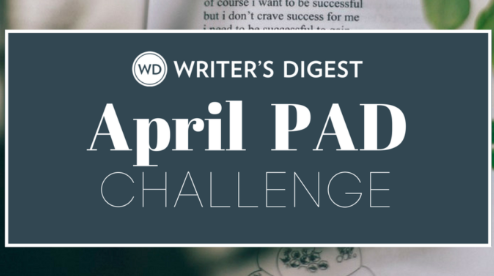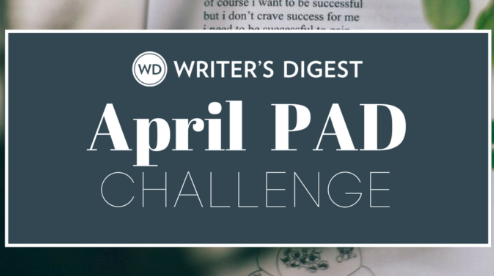Lyric Writing vs. Poetry
Writing Better Lyrics author Pat Pattison discusses the differences between songwriting and poetry, including how writing song lyrics differs from writing poems.
Writing Better Lyrics has been a go to guide for songwriters for nearly 2 decades. What did you set out to accomplish with the new edition?
Songs are your best teachers. I try to learn something from every song I hear. I try to see what’s working, and why—where the song connects with me—where it makes me feel something. Then I look under the hood to see how it was put together, to extract tools that I can pass on to my students. I’ve learned a lot since I published WBL, and I’ve tried to pass those new ideas along in this edition.
You teach classes on poetry as well as songwriting. What, in your opinion, are the main differences between writing a poem vs. writing a song?
Since the invention of the printing press, poetry is delivered mainly to the eye. Lyrics are delivered mainly to the ear. Many consequences follow from this:
A. Poets can depend on the readers being able to stop and go back, even to look up words while reading the poem. A lyricist can’t.
B. Since the end of a line in poetry is a visual cue, a poet can end a line, yet let the content continue on to the next line, creating tension, but not confusion:
You may see their trunks arching in the woods
Years afterwards, trailing their leaves on the ground
Like girls on hands and knees that throw their hair
Before them over their heads to dry in the sun.
Robert Frost –“Birches”
The tension between line 3’s ending and the idea continuing into the next line feels like the girls are actually tossing their hair…
The end of a lyric line has a sonic cue—the end of a melodic phrase. Because the song is aimed at the ear, when a lyricist tries to carry a thought into the next melodic phrase, it usually creates confusion, since there is a disconnect between the melodic roadmap and grammatical structure.
C. Because a lyric is a sonic event (directed to the ear), rhyme is important, since it provides a roadmap for the ear; showing relationships between lines, creating forward motion, creating either stability or instability in sections, and telling the ear where sections end.
Though rhyme is common in poetry it is less important, since the reader can see where a section ends. Even when poems rhyme, they don’t necessarily announce a phrase’s end or a section’s end:
O wild West Wind, thou breath of Autumn's being,
Thou, from whose unseen presence the leaves dead
Are driven, like ghosts from an enchanter fleeing,
Yellow, and black, and pale, and hectic red,
Pestilence-stricken multitudes: O thou,
Who chariotest to their dark wintry bed
The winged seeds, where they lie cold and low,
Each like a corpse within its grave, until
Thine azure sister of the Spring shall blow
Her clarion o'er the dreaming earth, and fill
(Driving sweet buds like flocks to feed in air)
With living hues and odours plain and hill:
Shelly –“Ode to the West Wind”
Note that with the recent trend toward the performance of poetry in slams and rap, both directed more to the ear than the eye, rhyme becomes an important element, since both are directed to the ear rather than the eye.
D. The compositional strategies of the poet differ dramatically from the lyricist’s. The vast majority of poems, whether fixed form, blank verse, or free verse, are linear journeys, moving from idea to idea, line to line, until the end. Except in rare cases, such as the rondel, poetry’s compositional strategy does not use repetition of content. Older ballade poetry sometimes uses repetition, but note that it was performed, and directed to the ear rather than the eye.
Lyrics depend heavily on repeated content, usually refrains or choruses. The development of ideas must take account of the repeated sections, and in the ideal case, transform or deepen the meaning of that same content each time we hear it. Watch the phrase “What’ll I do” gain weight in each section because of the focus each section provides. First, distance; second, the danger of finding someone new; and finally, the heartbreaking announcement that the love is over:
What'll I do
When you are far away
And I am blue
What'll I do?
What'll I do?
When I am wond'ring who
Is kissing you
What'll I do?
What'll I do with just a photograph
To tell my troubles to?
When I'm alone
With only dreams of you
That won't come true
What'll I do?
Irving Berlin
E. A lyricist has extremely limited space to work with. Normal commercial songs, lasting 2 ½ to 3 minutes, limit space dramatically. Not counting the repeated choruses or refrains, the average commercial song contains 12 to 20 lines. Unless working in a fixed form (sonnet, terza rima, haiku etc), the poem can continue as long as it needs to.
F. Lyrics are far more dependent on regular rhythm than poems, since a lyric’s rhythm is joined to musical rhythm. The musical rhythm, because it can extend a syllable’s length or syncopate its rhythm, can transform what, if spoken, would be mind-numbingly regular, into an interesting journey.
Poetry must contain its own theme and variation, setting a rhythm and syncopating against it, as in the first two lines of Keats’ “Ode On a Grecian Urn:”
Thou still unravished bride of quietness - / - / - / - / - -
Thou foster child of silence and slow time - / - / - / - - / /
The first 4 feet of line 1 are strictly iambic. The last foot is pyrrhic, creating a dimunendo that supports “quietness.” The first three feet of line 2 are strictly iambic. The fourth foot is pyrrhic, supporting “silence,” while the final spondee slows the line down, reinforcing the slowness of time. Neat.
G. Because of Western Music’s love affair with 2, 4 and 8 bar phrases, the standard lines of lyric are usually tetrameter (4 strong stresses) and trimeter (3 strong stresses). The usual lyric section is built in common meter (Mary had a little lamb):
She was wórkin' ín a tópless place 4 stresses
And I stópped in fór a béer, 3 stresses
I júst kept lóokin' at the síde of her fáce 4 stresses
In the spótlíght so cléar. 3 stresses
And láter ón as the crówd thinned óut 4 stresses
I's júst about to dó the sáme, 3 stresses
She was stánding thére in báck of my chair 4 stresses
Said to mé, "Don't I knów your náme?" 3 stresses
Bob Dylan-“Tangled Up In Blue”
or matched tetrameted couplets (Eenie Meenie Miney Mo):
Láte at níght in súmmer héat. 4 stresses
Expénsive cár, émpty street 4 stresses
There's a wíre in my jácket. Thís is my trade 4 stresses
It ónly takes a móment, dón't be afráid. 4 stresses
Sting –“Stolen Car”
The overwhelming majority of English poetry is written in 5-stress lines (on a foundation of iambic pentameter). The only lyric form consistently employing 5-stress lines is blues:
My báby léft me, I’m só alóne and blúe
Yes, báby léft me, I’m só alóne and blúe
I cry all níght, I dón’t know whát to dó
There are many other differences, but this ought to suffice to quell the often heard claim, “Her lyrics are pure poetry.” No, they aren’t, though they are likely written in fresh, interesting language, using images and metaphor effectively. At least great poetry and great lyrics share that in common.
What's the best piece of writing advice you ever received?
Three sources: Aristotle’s Poetics, where he says that every great work of art displays the same quality: Unity. Everything works together, everything in the work belongs and serves the purpose of the work. Aristotle’s may have been the first statement of Prosody: appropriate relationship between elements, whatever they may be: melody and words, chords and message, rhyme scheme and emotion, and many others. This has become the guiding principle in all my writing and teaching.
Leonard Bernstein’s brilliant lecture series at Harvard in 1973, “The Unanswered Question.” He shows the depth of the relationship between music and poetry, and how both use the same fundamental principles—true, indeed, for all the arts. They are all fundamentally the same, just having different avenues of expression. Painting is different than song, but at the deepest level, they all use the same principles: tension/resolution, symmetry/asymmetry, etc. This has allowed me to teach poetry to musicians, using a language they know and love to explain how poems work: counter-pointing, rhythm, syncopation; constructing tonic, subdominant or dominant functions at the ends of lines. They get it instantly, and it allows them to look at the other arts the same way.
Paul Fussell’s Poetic Meter and Poetic Form. A marvelous book, especially chapter three where he talks about poetic use of rhythm, and the emotional effects of various syncopations within a line of metered poetry. The relationship between lyric and melody works in the same way.
The combined effect of the three works creates compelling reasons to have a huge toolbox to draw from, and to select and use these tools in support of the central idea of your song: its number of lines, lengths of lines, rhythm and phrasing of lines, rhyme scheme, and rhyme types. The structure you create acts as a film score would—adding additional emotion to the message, even controlling how the listener perceives it.
Looking at writing through the eye glasses of Prosody focuses everything. It keeps the message and emotion central, and organizes the elements of structure to support them. It works for writers and makes teaching writing immeasurably more effective.
What can a writer working in any genre learn from looking at song lyrics?
Prosody in a confined space. Think of melody as nouns, chords as adjectives, and rhythm as verbs (from Bernstein’s lectures). Watch how they support and transform each other. The same melody with major chords sounds different when minor or other chords are substituted. Melody and harmony together are activated by rhythm and tempo, again creating many options for expressing an idea effectively. All writers are interested in coloring ideas in different ways, and making them move forward at tempi and, if not rhythm, flow.
The effective combination of melody, harmony, rhythm and tempo with lyric and its structure can create a force to be reckoned with. It can change lives. It can topple empires.
*****
Check out Writing Better Lyrics, by Pat Pattison:
(WD uses affiliate links.)




